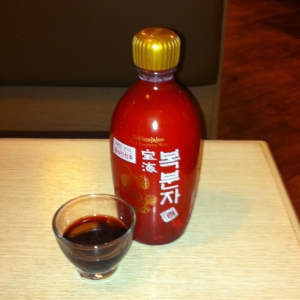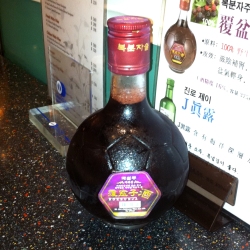Dried Mushrooms are considered to be delicacies around the world. They are one of the few classes of food that actually taste better after preservation. It’s very easy to bring dried mushrooms back to life, you simply have to soak them in water. Originally mushrooms were only dried as a means of preserving them but today dried mushrooms have become a culinary class in their own right. They are indispensable in certain recipes where fresh mushrooms simply can’t do the job. In this post I will cover the gourmet dried mushroom varieties, namely: Morel, Porcini and Shiitake.
There are three reasons why dried mushrooms are prized in the kitchen. Firstly, the dessication process somehow transforms the slightly bitter taste of mushrooms into a nice umami flavour, that fifth taste which tricks the brain into thinking there is meat present. The taste and aroma of the mushrooms is also intensified. This makes dried mushrooms great for vegetarian dishes. Secondly, a by-product of using dried mushrooms is the tasty soaking liquid which can be used to flavour soup, rice, batter, pasta or anything else that requires water. Thirdly, specific taste can also be infused directly into dried mushrooms by adding herbs, sugar, soya sauce, mirin or whatever else you fancy to the water the mushrooms are soaked in. Once the packaging is opened, extend the life of your dried mushrooms almost indefinitely by keeping them in the fridge. While they won’t spoil in the fridge, it is still important to store them in air-tight containers as otherwise they will lose their aroma over time.
Hydrating the dried mushrooms properly is important. Give your mushrooms a quick rinse under the tap before soaking. Always soak your dried mushrooms in cool water to make the rehydration process as gentle as possible. Hot water may work faster, but it makes the mushroom flesh tougher than it needs to be. It goes without saying; never just throw dried mushrooms into a boiling pot. Twenty minutes of soaking time should do for most varieties. Don’t use too much water or the soaking liquid will get too diluted; if your mushrooms go up to the 1/2 cup mark, add water to the 3/4 cup level. After the mushrooms have become thoroughly soaked and supple, you can use most of the soaking liquid for cooking but discard the last bit at the bottom of the bowl that contains the sediments.
Dried Morel 
Morel mushrooms are the undisputed King of Dried Mushrooms. This fact is reflected in their price; they tend to cost anywhere from 4 to 6 times more than other types of premium dried mushrooms. There is no such thing as cheap morel. Because they are expensive, you should beware of fakes. Some growers appear to offer cheaper produce but only because they purposely leave on too much of the stem to increase the gross weight. The bottom of the stem is leafy and must be trimmed off. Charlatans will even sometimes try to substitute morels with similar shaped mushrooms. The real McCoy has a honeycomb type lattice laced all over a yellowish brown cone shaped cap. The fakes are easily recognized once you see their skin is wrinkled and not honeycombed.
I would describe the taste of rehydrated Morel mushrooms as nutty, meaty and slightly sweet. Darker morels are more valuable as they have a stronger taste and fragrance. Morel mushrooms are a kind of sponge mushrooms and after they are soaked, it is important to squeeze them dry. This spongy quality also allows them to absorb a generous amount of whatever sauce they are cooked in, which is later released with every bite.
Morels go extremely well with butter and one of the best ways to cook them is to sauté them in butter with a pinch of salt. You would normally serve them with roasted or pan-fried chicken, pork or veal dishes, pretty much anything that goes with white wine. Stronger meats may overwhelm its delicate taste. I will sometimes add sautéed morel to my mushroom soup in lieu of truffle. As morels have a crispier meatier texture than most mushrooms, they also go well with certain pureed foods like Cauliflower Puree. Morels are most often used in French cooking and morel sauce is one of the key sauces in any French kitchen. The sauce is made by blending butter sautéed mushrooms with their soaking liquid, white wine and cream followed by simmering.
Dried Porcini 
If there is a King of Dried Mushrooms, then there should be a Queen and this would be the Porcini mushroom. Unlike Morels, Porcini are always dried in slices but you can get a pretty good idea of what a whole mushroom is like by looking at the nice cross section of the Porcini on the left side of the photo. One distinct feature of Porcini mushrooms is they have no gills. They also have a long fleshy stem which is as edible as the large brown cap.
I would describe the taste of rehydrated Porcini as slightly salty, smoky and meaty. They exude an intense heavenly aroma like no other mushroom. After your first whiff, you’ll easily recognize its signature smell. One nice thing about Porcini is it remains nice and soft after rehydration.
Porcini is common in Italian cuisine and it is the key ingredient in some Porcini-based risottos. Generally the soaking liquid is used in place of wine when simmering the risotto and its concentration by boiling off most of the water results in a very distinct porcini taste. They are also used to flavour polenta for the same reason. Because of their concentrated flavour, you’d normally serve Porcini with beef, lamb and wild game, anything that goes with red wine. They are often used in ragout, sauces and gravies. Slices of porcini also go well with salads, especially if you add some soaking liquid to the dressing.
Dried Shiitake 
The Shiitake (pronounced She-E-Tah-Kay) is the predominant gourmet dried mushroom in the Far East. It is the most popular mushroom in Japan where its Western name is derived. In China it is called the winter mushroom, a reference to the past when fresh mushrooms were not available in winter. It is always dried whole and if you see any sliced shiitake at the store, these are of an inferior grade.
As Shiitake are bulkier, they will take a longer time (I’d say 45 min) to get thoroughly soaked. You would normally quarter, slice or even dice Shiitake after they have been soaked. The stem of the Shiitake is quite woody and is always removed. As they are very hard, you cannot remove the stem before soaking. But you don’t want to wait til after soaking because then the part of the cap attached to the stem will still be hard. Snip them off completely with scissors when the mushrooms are partially soaked. If don’t like to waste, use the stems when boiling stock.
Shiitake have a less distinctive taste and fragrance than its Western counterparts above. I’d describe its taste and aroma simply as a very interesting earthy mushroom flavour. It is a common practice to put soya sauce, sugar or other similar seasoning items into the soaking liquid, so the shiitake gets additional layers of taste. The rehydrated Shiitake mushrooms have a firmer, I would even describe it as plump consistency compared to their limply fresh cousins and they are prized as much for their texture as their taste. They stay that way even if you cook them for a long time.
While Morel and Porcini are wild mushrooms, Shiitake are cultivated. This means they are readily available in both fresh and dried forms, which introduces the complication of when the fresh ones should be used and when the dried ones are more appropriate. For example, dried Shiitake would be used in rice-meat combination dishes (Chinese Claypot Rice and Japanese Oyakodon) while fresh Shiitake would be battered and deep fried (like Western stuffed mushrooms). It’s too complicated to get into the details here, just apply common sense. In Western style dishes, you can use them when braising meat, in terrines etc.
Dried Chanterelle 
Including Chanterelle in this post was an afterthought. I’m not really a big fan of this type of dried mushroom but I just happened to have some in the fridge.
Chanterelle are quite light coloured and are sometimes called Golden or Yellow Chanterelle. They are often associated with French cooking, just as Porcini is Italian while Shiitake is East Asian. You can recognize them by their small size and trumpet shape. They are one of those rare varieties which have a strong flavour. Its taste is quite unique, one that you wouldn’t normally identify with mushroom, . The same goes for its aroma, which I would describe as flowery (though others call it fruity). In fact I tend to think of it as half flower and half mushroom. So don’t use too much of it or it might overpower all your other flavours.
The main reason I don’t use dried Chanterelle often is they tend to be a bit fibrous and they remain so even after being cooked for a while. They are what you might call slightly chewy mushrooms. This however can be a desirable quality, such as when you want your mushrooms to add an additional layer of texture, like in stews of pie fillings.
Notes 
- If you really want something convenient, you can try the Porcini stock cubes by Knorr. They contain little flakes of Porcini and are great as the stock cube for cream of mushroom soup or risotto.
- Porcini is also sold in powder form, which is simply dried Porcini ground into powder. Use Porcini powder if you want to enhance flavour (its not a bad substitute for MSG) without imparting a Porcini-specific taste.
























 Have you tasted Pasta Nera, that black pasta made with squid ink to give it a unique taste? Shrimp Roe is used in the same way to flavour dried chinese egg noodles. They are mixed into the dough before the noodles are made and then the noodles are dried into balls (you’ll be able to make out the individual seeds if you enlarge the photo on the right). Such noodles are considered a premium variety.
Have you tasted Pasta Nera, that black pasta made with squid ink to give it a unique taste? Shrimp Roe is used in the same way to flavour dried chinese egg noodles. They are mixed into the dough before the noodles are made and then the noodles are dried into balls (you’ll be able to make out the individual seeds if you enlarge the photo on the right). Such noodles are considered a premium variety.

